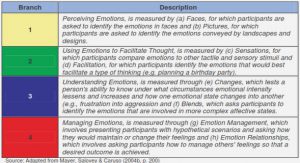Get Complete Project Material File(s) Now! »
Backgrounds: paths, random multiplicative functions on paths
2.1. Paths. — Let M be either a smooth compact surface (possibly with boundary) or the plane R2. A measure of area on M is a smooth non-vanishing density on M, that is, a Borel measure which has a smooth positive density with respect to the Lebesgue measure in any coordinate chart. It will often be denoted by vol. We call (M,vol) a measured surface. We endow M with a Riemannian metric & and we will denote by &0 the standard Riemannian metric on R2.
Definition 2.1. — A parametrized path on M is a continuous curve c : [0, 1] ! M which is either constant or Lipschitz continuous with speed bounded below by a positive constant.
Two parametrized paths can give the same drawing on M but with di↵erent speed and we will only consider equivalence classes of paths.
Definition 2.2. — Two parametrized paths on M are equivalent if they di↵er by an increasing bi-Lipschitz homeomorphism of [0, 1]. An equivalence class of parametrized paths is called a path and the set of paths on M is denoted by P(M). Actually, the notion of path does not depend on & since the distances defined by two di↵erent Riemannian metric are equivalent. Two parametrized paths pp1 and pp2 which represent the same path p share the same endpoints. It is thus possible to define the endpoints of p as the endpoints of any representative of p. If p is a path, by p (resp. p) we denote the starting point (resp. the arrival point) of p. From now on, we will not make any di↵erence between a path p and any parametrized path pp 2 p.
Definition 2.3. — A path is simple either if it is injective on [0, 1] or if it is injective on [0, 1[ and p = p.
Measures on the set of multiplicative functions. —
2.2.1. Definitions. — Let P be a subset of P(M) and let L be a set of loops in P. Definition 2.11. — A function h from P to G is multiplicative if and only if:
– h(c−1) = h(c)−1 for any path c in P such that c−1 2 P,
– h(c1c2) = h(c2)h(c1) for any paths c1 and c2 in P which can be concatenated and such that c1c2 2 P. We denote by Mult(P,G) the set of multiplicative functions from P to G. A function from L to G is pre-multiplicative over P if and only if:
– it is multiplicative,
– for any l and l0 in L which are equivalent in P, we have: h(l) = h(l0). We denote by MultP (L,G) the set of pre-multiplicative functions over P. We will often make the following slight abuse of notation.
Planar Markovian holonomy fields
We have now all the notions in order to define continuous and discrete planar Markovian holonomy fields: these are families of random holonomy fields on subsets of P(R2) satisfying an area-preserving homeomorphism invariance and an independence property 4.1. Definitions. — First, we define the strong and weak notions of (continuous) planar Markovian holonomy fields. We will use the following notation: if l is a simple loop in R2, Int(l) will stand for the bounded connected component of R2 \ l.
Definition 4.1. — A G-valued strong (continuous) planar Markovian holonomy field is the data, for each measure of area vol on R2 of a gauge-invariant random holonomy field Evol on R2 of weight Evol( ) = 1, such that the three following axioms hold:
P1 : Let vol and vol0 be two measures of area on R2. Let : R2 ! R2 be a locally bi-Lipschitz homeomorphism which preserves the orientation and which sends vol on vol0 (i.e. vol0 = vol # −1). The mapping from Mult(P(R2),G) to itself induced by , denoted also by , satisfies: Evol0 # −1 = Evol.
Table of contents :
R´esum´e
Remerciements
Introduction
1. Les processus de L´evy
2. Introduction aux champs markoviens planaires
3. Invariance par hom´eomorphisme et tresses
4. Invariance par transformation de jauge et boucles
5. Champs markoviens d’holonomies planaires
6. Invariance par transformation de jauge et transform´ee de Wilson
7. Limites en grandes dimensions
8. Relations entre syst`emes : ind´ependance, libert´e et P-libert´e
9. U(N)-Yang-Mills quand N tend vers l’infini
10. Marches al´eatoires sur S(N), S(N)-Yang-Mills pour..
11. Results obtained in this thesis and their localization
Bibliographie
Champs markoviens d’holonomies
1. Introduction
2. Backgrounds: paths, random multiplicative functions on paths
3. Graphs
4. Planar Markovian Holonomy Fields
5. Weak constructibility and locality
6. Group of reduced loops
7. Braids and probabilities I
8. Planar Yang-Mills fields
9. Braids and probabilities II
10. Characterization of […] Planar Markovian Holonomy Fields
11. Classification of discrete Planar Markovian Holonomy Fields
12. Markovian Holonomy Fields
References
Partitions et g´eom´etrie
1. Introduction
2. Partition algebra
3. Geometry on the set of partitions
4. Convergence of elements of Q N2N C[Pk(N)]
5. The deformed partition algebra
6. Refined geometry of the partition algebra
7. Consequences of the convergence of the deformed algebras
8. Geometric and combinatorial consequences of Theorem 4.1
9. Algebraic fluctuations
10. An introduction to the general R-transform
11. Conclusion
References
Matrices al´eatoires invariantes par le groupe sym´etrique
1. Introduction
2. Random matrices and observables
3. Schur-Weyl’s duality
4. Random matrices and cumulants
5. Exclusive moments and cumulants
6. The R-transform and the non-commutative law
7. A-freeness
8. The A-non-commutative central limit theorem
9. Classical probabilites
10. L´evy processes
References
Revˆetements ramifi´es
1. Introduction
2. Convergence of random walks on S(N)
3. Convergence of YM (S(N))
4. Random ramified coverings
References






